The following is an excerpt from Reopening the World: How to Save Lives and Livelihoods, a new report where Brookings experts offer ideas to help policymakers protect lives and save livelihoods in the midst of the current COVID-19 pandemic.
 For Germany, the “reopening” phase of the coronavirus pandemic presents two challenges. The first is finding and maintaining the delicate balance between saving lives and saving the economy. The second is preserving the ability to treat the country’s preexisting conditions, notwithstanding its much-praised resilience in the first two months of the crisis: a political order in transition, an economy that despite its wealth faces significant structural and technological hurdles, and an increasingly unfavorable strategic environment. Because of Germany’s relative political weight and its importance as a large anchor economy in the middle of Europe, the consequences of its success (or failure) extend well beyond the country’s borders.
For Germany, the “reopening” phase of the coronavirus pandemic presents two challenges. The first is finding and maintaining the delicate balance between saving lives and saving the economy. The second is preserving the ability to treat the country’s preexisting conditions, notwithstanding its much-praised resilience in the first two months of the crisis: a political order in transition, an economy that despite its wealth faces significant structural and technological hurdles, and an increasingly unfavorable strategic environment. Because of Germany’s relative political weight and its importance as a large anchor economy in the middle of Europe, the consequences of its success (or failure) extend well beyond the country’s borders.
SAVING LIVES VERSUS SAVING THE ECONOMY
Germany’s nationwide pandemic shutdown began with an announcement of “radical measures” by Chancellor Angela Merkel on March 16, followed by even more restrictive rules on March 22. This emergency management framework received a great deal of praise at home and abroad for being decisive, evidence-based, and judicious. Arguably, it was key in flattening the German infection curve. But the decision-making process reflected both the weaknesses and the strengths of the country’s federalist culture: mayors, state leaders, and the federal government bickered in public over who was responsible while the infection curve vaulted upward in late February and early March. In the end, careful closed-door negotiations between Merkel’s Chancellery and the governments of the Länder, Germany’s sixteen states, led to a dependable political consensus.
By early May, Germany had recorded just over 160,000 COVID-19 infections, 127,000 recoveries, and nearly 6,500 deaths (a mortality rate of 4.0 percent). The reproduction factor (which measures how many people are infected by each new case) had dropped below 1. Across the country, 2.7 million tests had been administered, at a rate of more than 330,000 per week. On May 6, Chancellor Merkel announced a carefully controlled restarting of public life, nearly two months after decreeing a nationwide shutdown. “We can afford a little audacity,” she said.
According to the statement agreed by the federal and state governments, social distancing rules are to be maintained (with masks still obligatory in many places) in slightly looser form until June 29. Large gatherings remain prohibited until at least August 31. But schools, stores, restaurants, tourism, cultural centers, and outdoor recreation spaces are to gradually reopen; and the Bundesliga, Germany’s soccer league, began playing games to empty stadiums from mid-May. The details of implementation, however, are left to the states. Local health agencies (often working through call centers staffed by students) are tasked with tracing. An emergency mechanism now requires states to reinstate restrictions in reaction to new coronavirus flare ups (defined as 50 new infections per 100,000 inhabitants over a week). All this pushes decision-making to the local level, permitting a differentiated response to significant regional variances in infection levels.
Still, Merkel noted that the country remains at the beginning of the pandemic, and “we will have to deal with this virus for a long time.” German districts in several states have since reported outbreaks in senior care homes, refugee centers, and in meat-packing plants, triggering a local return to stricter rules. The Robert Koch Institute, Germany’s equivalent of the Centers for Disease Control and Prevention, warned sternly that it would be “necessary to observe the development very closely over the coming days.” Some German epidemiologists weighed in, calling the trigger threshold of 50 per 100,000 inhabitants arbitrary and probably too high. In mid-May, the Bundestag (the federal legislature) took the precaution to mandate more testing (especially for those working with at-risk groups), greater transparency in reporting test results, and more financial support for care-workers tending to the elderly. Clearly, audacity will have to be tempered with prudence and patience. In late May, the outlook seemed more hopeful than not: Germany’s COVID-19 deaths were nearing 8,000 (4.6 percent), but the number of new cases was flattening, and the reproduction factor was less than 1.
As for Germany’s economy, the federal government tore up its fiscal rule book with the most comprehensive package of salvage measures in Europe on March 25. It is unparalleled in the country’s postwar history, and even the measures taken in the context of the global financial meltdown of 2009 pale in comparison. Funding for Kurzarbeit (short-time work), a scheme whereby the state compensates employers for keeping furloughed employees on the books by paying two thirds of their wages, was massively expanded. The government also announced €400 billion ($433 billion) in liquidity guarantees for larger firms and direct grants for 3 million small companies and freelancers, totaling around €700 billion ($834 billion)—the equivalent of two annual national budgets. To accomplish all this, the government had to invoke an emergency clause to that most sacred of all sacred German cows: the Schwarze Null (black zero) constitutional debt brake. Bureaucracies across the country went into overdrive to ensure that companies and individuals got their money within days.
However, economic reality quickly overtook the government’s actions. By late April, German companies had registered a “breathtaking” (in the words of Detlef Scheele, the head of the federal labor agency) 10.1 million employees for Kurzarbeit. Companies have to pre-register their employees for this scheme based on very rough estimates, so the actual number of workers furloughed in the end may be smaller. By comparison, 3.3 million workers were registered during the global financial crisis of 2009, and 1.4 million received furlough compensation. At the time, this enabled big industrial plants to call their workers back in and ramp up production again quickly. Yet many of the registrations came from small and medium enterprises, many of whom might not survive the crisis at all, ultimately leaving their workers jobless despite the protective measures. Job losses surged by more than 300,000 in April to a total of 2.64 million, pushing the unemployment rate to 5.8 percent.
Meanwhile, the Federal Statistical Office reported that while consumption of disinfectant, soap, toilet paper, and condoms has jumped, production of key German export goods— chemicals, machine tools, cars, and car parts—fell to levels comparable to those of the financial crisis. The private Statista consumer confidence index has plummeted. Surveys conducted in April by the Ifo Institute for Economic Research show production expectations across German industry, but in the auto industry in particular, at historic lows.
The government is reportedly mulling an economic stimulus package of up to €150 billion, but has said it won’t decide before June. The automotive lobby, specifically, has called for purchase premiums or scrappage bonuses, which are supported by the minister presidents of Lower Saxony, Baden Württemberg, and Bavaria, where hundreds of thousands of jobs depend on car and car parts manufacturers. But the German Council of Economic Experts, an independent group that advises the federal government, foresees a recession with a GDP drop in 2020 between -2.8 and -5.4 percent; the IMF’s prediction is even more dire at -7.0 percent. Tax revenue estimates, according to reports from an expert advisory group to the finance ministry, are down €100 billion ($108 billion) — and possibly a total of €300 billion ($335 billion) over the next four years.
PRE-EXISTING CONDITIONS
Given that experts and politicians in Germany are warning that the pandemic may last until the end of the year, it is perhaps too early to speculate about the post-coronavirus order.
Given that experts and politicians in Germany are warning that the pandemic may last until the end of the year, it is perhaps too early to speculate about the post-coronavirus order. Nonetheless, some developments are worth noting.
Pre-pandemic Berlin was obsessed with the slump in the polls of Merkel’s fourth and (according to her) last coalition government, and with the surprise resignation in February of her heir presumptive, defense minister Annegret Kramp-Karrenbauer as leader of Merkel’s center-right Christian Democratic Union (CDU). In a nation-wide poll from early May, however, the CDU’s approval rating shot up by more than 10 percentage points to 39 percent (its coalition partner, the Social Democrats, continues to languish at pre-pandemic levels of 16 percent). Merkel herself leads the personal popularity rankings with 68 percent, followed by her vice chancellor and finance minister Olaf Scholz at 59 percent. The man preferred by respondents as her successor, however, isn’t even an official candidate: Bavarian minister president Markus Söder (53 percent), who has been praised for managing the situation in his hard-hit state effectively and judiciously. Majorities of 54–56 percent dislike the three official candidates: Armin Laschet (minister president of North RhineWestphalia), Friedrich Merz (ex-parliamentarian and businessman), and Norbert Röttgen (chair of the foreign policy committee in the Bundestag).
The same poll suggests that Germans overall approve of the federal government’s crisis management (satisfied/very satisfied: 67 percent), are optimistic that they will keep their jobs (84 percent), and that the restrictions on their freedoms are temporary (60 percent). While 54 percent want restrictions loosened, 41 percent would prefer the status quo.
Yet the voluntary self-discipline exercised by politicians and citizens alike in March when the county went into shutdown mode has visibly eroded; and this despite the fact that Germany’s restrictions were much more liberal than those in France, Italy, or Spain, and were initially successful in flattening the infection curve. State minister presidents have competed to present the earliest and most liberal opening rules, and opposition politicians and pundits inveighed against “government by epidemiologists.” Even the usually calm Merkel briefly lost her temper at what she called “Öffnungsdiskussionsorgien” (roughly: self-indulgent debates about loosening the rules).
The hard-right Alternative für Deutschland (AfD) party, which before the crisis had had some success in splitting and infiltrating the right-wing fringes of the CDU, has largely been sidelined during the first months of the crisis and has sunk in the polls. But on the weekends after the gradual opening policy was announced, several German cities saw thousands of people demonstrating angrily against the shutdown, including some well-known far right populists and conspiracy theorists. Will the AfD manage to turn this mood to its political advantage, as it did during the refugee crisis of 2015? Federal President Frank Walter Steinmeier was careful to emphasize the right of citizens to criticize government handling of the pandemic. But an unnamed former minister told the daily Süddeutsche Zeitung that the protests seemed like a déjà vu to him, with a huge open–ended crisis, highly complex issues, a growing need for simple answers, and the radical right attempting once more to profit from the situation. “The only difference,” he said, “is that the problems today are even bigger.”
Pre-pandemic economic policy debates had centered on the question of whether the wealth and trade surplus of Europe’s largest economy were politically and economically sustainable, given a growing list of risks: the Trump administration’s trade war threats, a decade of underinvestment in physical and digital infrastructure, and the failure of key industries (the car industry foremost among them) to adapt to new trends and technologies. As one of the world’s largest exporters, Germany is also uniquely exposed to disruptions of its global supply chains, or in cross-border labor movements, and these vulnerabilities remain.
In geopolitical terms, Germany has yet to adapt to the stark climate change in international relations: the increasingly predatory behavior of the great powers China and Russia, and a United States that under the Trump administration has become recklessly volatile and often hostile toward its European allies. All these are arguments for reinforcing the strategic sovereignty of European nation states as well as of the European Union. But pre-pandemic Germany tended to zigzag between hard-edged national self-interest and handwringing appeals to multilateralism. Nationalist reflexes led it to prohibit exports of medical goods and close its borders at the outset of the pandemic. Since then, it has lifted the exports ban, flown in patients from other European countries, and pledged to take part in a global vaccine effort; borders are scheduled to open again by mid-June. The May 5 constitutional court ruling questioning the legality of the European Central Bank’s monetary policy was widely criticized as a major blow to the unity of Europe. Chancellor Merkel’s May 18 announcement, made together with French president Emmanuel Macron, of a €500 billion European recovery fund, was all the more sensational. One test of Germany’s EU presidency in the second half of 2020 will be persuading skeptical member states—the so-called “Frugal Four” (Austria, Denmark, the Netherlands, and Sweden)—to go along.
AN UNCERTAIN OUTLOOK
The elements of Germany’s successful initial management of the pandemic are well–known: early, rigorous testing and tracking, large quantities of ICU beds and ventilators, a functioning civil service, considerable public trust and solidarity by citizens, political elites willing to put emergency action before partisan politics, a functioning social welfare economy with near–total insurance coverage, and a healthy national budget surplus.
Yet its failures have been equally visible: a combination of federalism and fractious politics meant time for political action was lost in the first weeks of the outbreak; early nationalist reflexes cost Germany political credit. And efforts to develop a German tracing app are still ongoing; according to media reports, it will not be available before mid-June.
The jury is still out on the long-term political, economic, and social consequences of the pandemic; some of the scenarios are relentlessly bleak. Yet there is proof that miracles do happen in Germany: the new BER international airport on the outskirts of Berlin, much derided for construction delays and design flaws that set it back by nearly a decade, is set to open in October. If this pig can fly—perhaps others can, too.
The Brookings Institution is committed to quality, independence, and impact.
We are supported by a diverse array of funders. In line with our values and policies, each Brookings publication represents the sole views of its author(s).


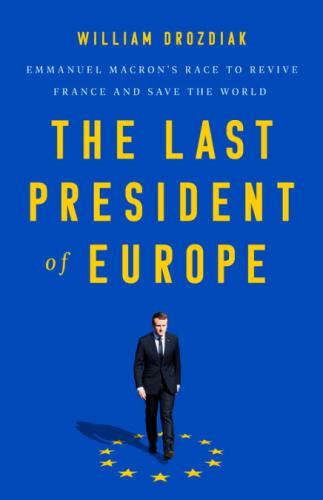
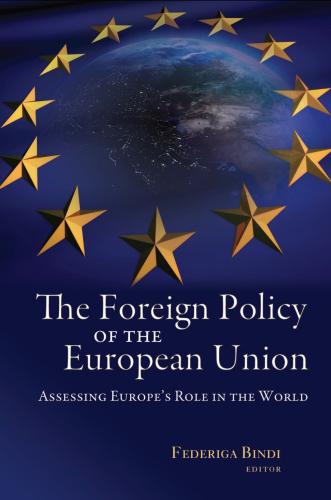
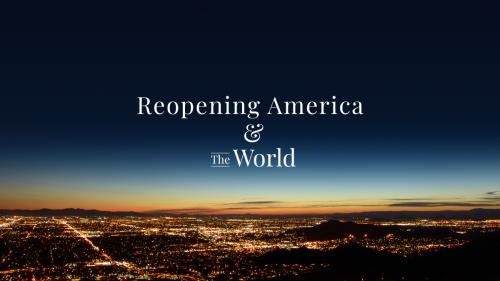

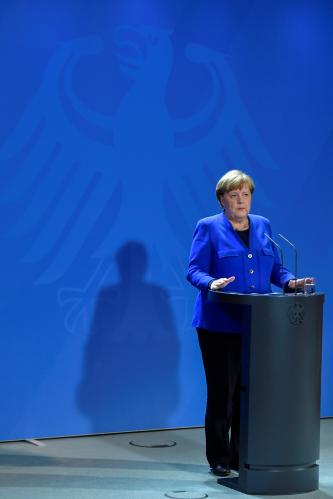
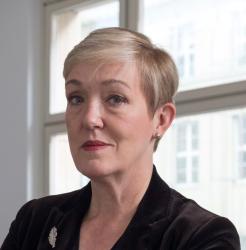
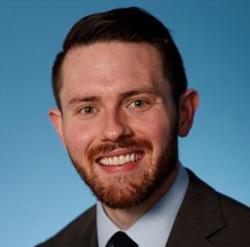



Commentary
Reopening the World: Reopening Germany
June 16, 2020